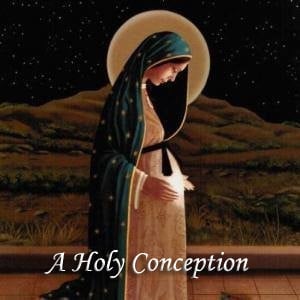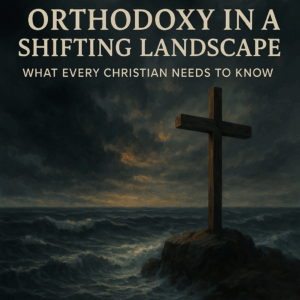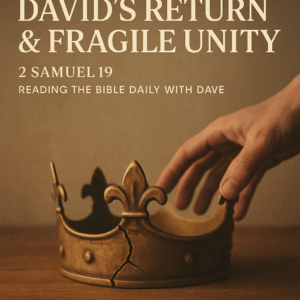⏱️ Estimated Reading Time: 7 min read
“But when the fullness of time had come, God sent forth his Son, born of woman, born under the law, to redeem those who were under the law, so that we might receive adoption as sons. And because you are sons, God has sent the Spirit of his Son into our hearts, crying, ‘Abba! Father!’” —Galatians 4:4-6
Connecting the Two Related A’s: Adoption and Abortion
God’s work of adoption, from its pre-temporal beginning to its earth-renewing climax, is as pro-life as it gets. When sin broke into the world through Adam’s rebellion, death began its tyrannical reign. As a result, human culture became a culture of death, beginning with the story of Cain and Abel and continuing on with ethnic genocide, politicide, infanticide (abortion), euthanasia, and the like in our contemporary world. We live in a world where death—since the fall of man in the beginning—continues to dominate the headlines in the major media outlets. If we’re not careful, we can become jaded, cynical, and shortsighted in our attempts to advocate for a pro-life agenda. What the world (and the church) actually needs more than a pro-life defense that’s filled with political and theological rhetoric is a vision of life in this world that is cast, framed, and informed by God’s consummated work of adoption.
There are basically two aspects to God’s work of adoption as presented in Scripture. The first aspect is child-placement. The Greek word for adoption (huiothesia) is a compound of the word “son” and the word “to place.” Taken together, these two words mean placement as a son. The second aspect of adoption is deliverance from the effects of the Fall. Unfortunately, this aspect of adoption is largely neglected. If you look at how the Apostle Paul actually uses the word adoption, you’ll see that he surrounds it with references to slavery, bondage, and freedom. This focus by Paul is especially apparent in his use of adoption in Romans 8. God’s deliverance of Israel out of Egyptian bondage is the echoing story behind the cosmic story of adoption in this great chapter. Notice the language that Paul uses: “set you free” (v. 2); “led by the Spirit of God” (v. 14; cf. Exo. 13:21); “the spirit of slavery” (v. 15); “subjected to futility” (v. 20); “will be set free” (v. 21); “bondage to corruption” (v. 21); “obtain the freedom” (v. 21); “groaning together” (v. 22; cf. Exo. 2:23); “redemption” (v. 23); and “firstborn” (v. 29; cf. Exo. 4:22).
If you examine Romans 8 closely, you’ll find that both animate and inanimate creation were “subjected to futility” and are in “bondage to corruption” (vv. 20-21). Nothing within the created order is left untouched by Adam’s sin. Nothing. This means we, as fallen human beings, are both perpetrators and victims of sin. This both/and understanding is critical to our opposition to abortion. When we’re cognizant of the fact that those we oppose in our fight against abortion are both perpetrators and victims of sin, we will be slower to demonize them. When our functional vision of life in this world is framed and informed by God’s work of adoption and its Exodus-like backdrop, we’ll find that we are much more bold and compassionate in our defense of unborn children.
Strengthening Our Defense of the Unborn With the Holy Embryo
When we as Christians go to Scripture to unpack the pro-life position and argue against abortion, we typically do not go to texts like Galatians 4:4-6. Sure, we’ll go to Galatians to talk about being pro-life and an advocate for adoption, but we usually won’t go there to show why abortion is wrong. I believe this is unfortunate, because Galatians 4:4-6 is more than just an “adoption” text. It’s also a pro-life text that highlights why it is that abortion is so very wrong.
“How so?” You ask.
In Galatians 4:4-6, Paul connects the eternality of God (who has no beginning) with the redemption of man (who has a beginning): “But when the fullness of time had come, God sent forth his Son, born of woman…” The phrase “God sent forth his Son” means that the Son of God existed outside of time. In John 17:24, Jesus declares that the Father loved him “before the foundation of the world.” Before there was a world for the Father to love (John 3:16), there was a Son whom the Father loved for all eternity past. At just the right time, then, God the Father sent forth his Son from eternity into space and time that He might make fallen sinners His children. The incarnation is the redemptive event when the Son—who from all eternity was fully (and only) God—became man without ceasing to be (fully) God. The Son became what He was not previously (man) without ceasing to be what He was eternally (God). Because of God’s sending forth of his Son, the Son is now forever both fully God and fully man in his one person.
The Son Became Man without Ceasing To Be God
Why am I stressing the truth that the Son of God became man at the incarnation without ceasing to be God? Because it means that the Son was present in the womb of the Virgin Mary at the very moment of conception. The Gospel of Matthew tells us that when Joseph was resolved to divorce Mary quietly after learning she was pregnant, an angel came to him in a dream and said, “Joseph, son of David, do not fear to take Mary as your wife, for that which is conceived in her is from the Holy Spirit” (Matthew 1:20). Matthew is not just telling us about the virgin birth (v.18). He’s also telling us about the virgin conception (v. 20). This fact is profoundly relevant to the abortion debate.
According to Scottish theologian, Thomas F. Torrance, the virgin conception and incarnation mean that “the fetus is sanctified by the Lord Jesus as an embryonic person” (1). Let me encourage you to read that sentence again before continuing. By the virgin conception, the human fetus is sanctified “as an embryonic person.” Since the unborn incarnate Son was a personal being from the very moment of his conception onward, every unborn child—from his/her conception onward—is sanctified as a personal being. To abort an unborn child, then, is a direct affront to the redemptive work of God in the incarnation of his Son.
Torrance continues, “[T]he virgin birth is crucial to our grasp of the nature and status in Christ’s eyes of the unborn child. The Son of God became a human being for us in the womb of the Virgin Mary, bone of our bone and flesh of our flesh. He became what we are. Think of the importance of the incarnation, then, for our understanding of and regard for the unborn child. Every child in the womb has been brothered by the Lord Jesus. In becoming a human being for us, he also became an embryo for the sake of all embryos, and for our Christian understanding of the being, nature and status in God’s eyes of the unborn child” (2).
Prior to the incarnation of the Son, you can see how people might have failed to see the inherent value and importance of the embryo. It would not have been a huge leap to conclude that abortion and infanticide were viable options to an unwanted pregnancy or child. But with the virgin conception and incarnation, that has forever changed.
The human embryo’s deepest identity is found in being an image bearer with the Son of God, who became man, with the Son who became the truly embryonic one for the sake of all embryos. The Son’s coming to us in the virginal conception is the essential basis of the value of every unborn fetus. The very center of our pro-life conviction is the Holy Embryo, and when the incarnation is the center of our defense of the unborn child, we’ll find that we become bolder and more compassionate in the face of human evil.
______________
- Thomas F. Torrance: “The Being and Nature of the Unborn Child.”
- Ibid.
Dan is an orphan advocate and thought-leader who loves to empower and equip people “to do justice, and to love kindness” (Micah 6:8) as they care for vulnerable children. Dan co-founded Together for Adoption in 2008 because he knew social causes that are driven by a robust theology can flourish and be sustained over the long-haul. In September of 2014, U.S. Senator Tim Scott honored Dan as his Congressional Coalition on Adoption Institute (CCAI) Angel in Adoption™. Dan is also the editor and primary author of Reclaiming Adoption: Missional Living Through the Rediscovery of Abba Father.



